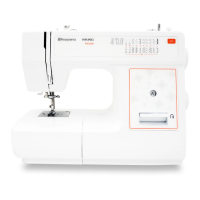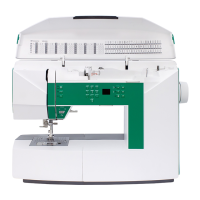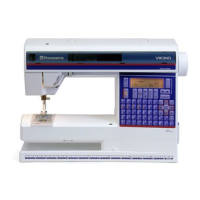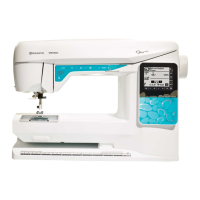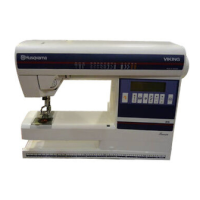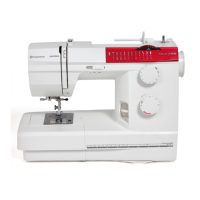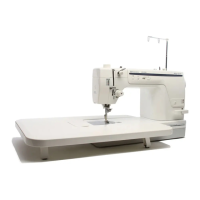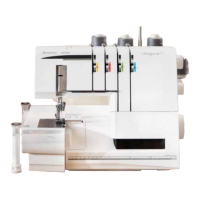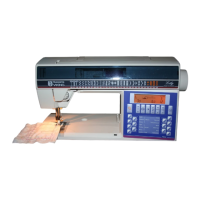
Do you have a question about the Husqvarna Viking Lily 535 and is the answer not in the manual?
| Type | Mechanical |
|---|---|
| Feed System | Drop Feed |
| Bobbin Type | Class 15 |
| Stitch Width | 5 mm |
| Needle Threader | Yes |
| Max Stitch Length | 4 mm |
| Max Stitch Width | 5 mm |
| Free Arm | Yes |
| Stitch Options | Decorative |
Precautions to reduce the risk of electric shock when operating the sewing machine.
Safety warnings for users to prevent burns, electric shock, or personal injury.
Instructions for winding a bobbin when the machine is threaded.
Guide for winding a bobbin using the vertical spool pin.
How to identify and achieve correct thread tension for sewing.
How to adjust the pressure of the presser foot for different fabrics.
Instructions on operating the presser foot lever to raise or lower the foot.
Step-by-step guide on how to remove and attach presser feet.
Procedure for replacing the sewing machine needle.
How to lower the feed teeth for specific sewing tasks like button sewing.
How to sew backwards and lock stitch in reverse.
How to change the stitch length using the Infodisplay controls.
How the STOP function secures and finishes stitches automatically.
Using mirror image and adjusting stitch width via controls.
How to select stitches and adjust width using dedicated buttons.
Using the FIX function to tie off stitches at the beginning or end.
Infodisplay advice on needle type, thread tension, and presser foot usage.
Information on recommended presser foot types and cording thread usage.
Guidance on using stabilizer and the buttonhole sensor foot.
Instructions for installing and using the Sewing Advisor panel.
How to select the desired stitch using the stitch selection buttons.
Connecting and using the automatic buttonhole sensor foot.
How to measure and set the correct size for buttonholes.
Changing buttonhole density and stitch length settings.
How to use the buttonhole knife to open buttonholes and remove stitches.
Method for sewing buttons that have a shank using a clearance plate.
Guidelines for using the straight stitch for various seams.
How to adjust the needle position for straight stitch and edge stitching.
Instructions for sewing a lapped zipper.
Description and use of the reinforced straight stitch.
Details on the stretch stitch for pliable and stretchy seams.
Applications of the zigzag stitch for lace, edging, and appliqués.
How to sew lace edging using a zigzag stitch.
Using the three-step zigzag stitch for overcasting and mending.
Technique for sewing loosely woven terry cloth with zigzag stitch.
Using zigzag stitches for mending tears and worn spots.
Applications of the flatlock stitch for seams and decorative hems.
Method for sewing narrow belts and bands.
Using the bridging stitch to join fabric edges, lace, and ribbon.
How to create elastic shirring using a bridging stitch.
Using stitches for seaming and overcasting edges directly.
Using the darning stitch for mending and repairing fabric.
Creating monograms and decorations with the taper stitch.
Facilitating sewing of trouser legs, sleeve hems, and darning with the free arm.
Tips for sewing thick seams, like jeans hems, using a clearance plate.
Instructions for sewing belt loops using zigzag stitches.
Procedure for changing the sewing machine's light bulb.
Routine cleaning and care to maintain machine performance.
Steps for removing and reattaching the stitch plate for cleaning.
Instructions for cleaning lint and dust from the bobbin area.
Diagnosing and resolving issues related to needle choice and thread tension.
Troubleshooting causes for upper and bobbin thread breakage.
Resolving problems with fabric feeding and incorrect stitch formation.
Troubleshooting machine sluggishness and motor operation.
Guidance on seeking professional help and impact of non-original parts.

